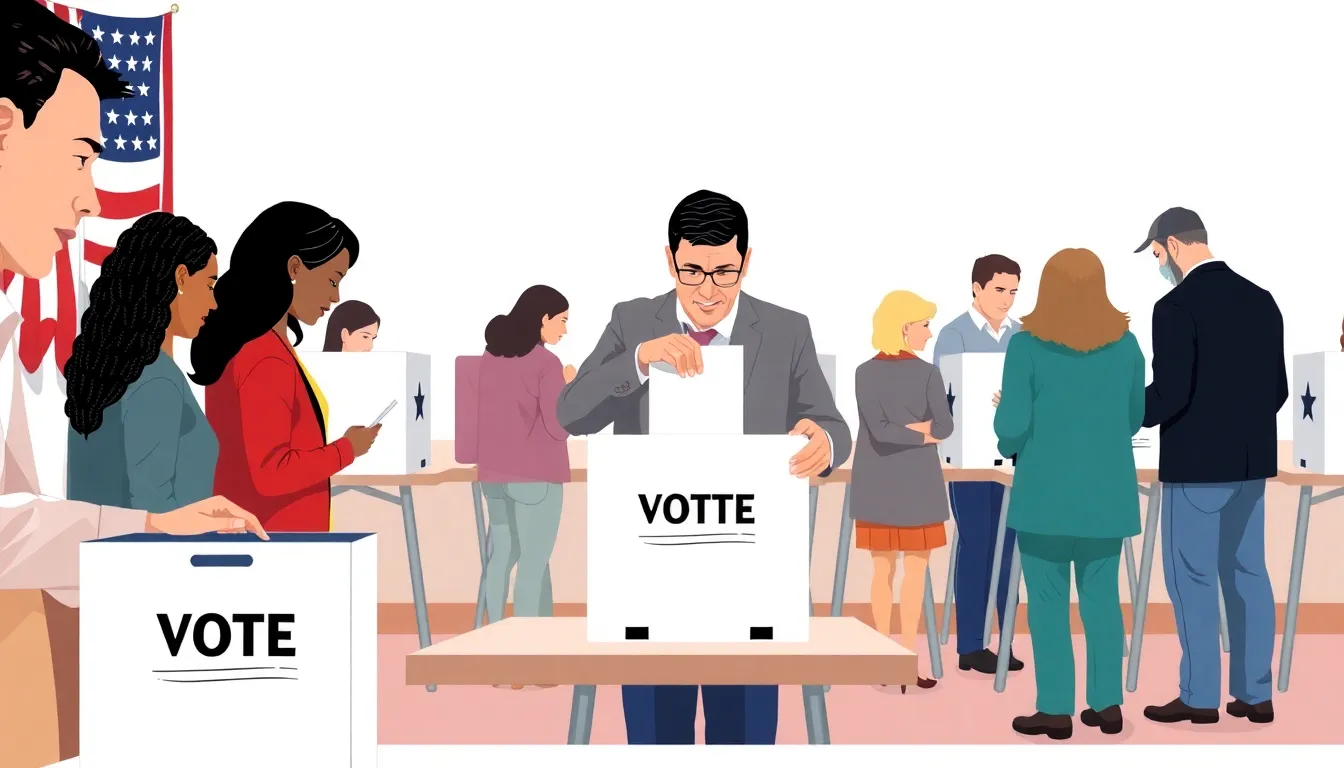When it comes to the electoral game, Pennsylvania is like that friend who always brings snacks to the party—absolutely essential! With its rich history and pivotal role in shaping the nation, this state packs a punch when it comes to votes. But just how many votes does Pennsylvania have? Spoiler alert: it’s more than just a handful of popcorn.
Table of Contents
ToggleOverview of Pennsylvania’s Electoral Votes
Pennsylvania plays a crucial role in the electoral process, housing a significant number of electoral votes. Understanding the state’s historical context and current vote allocation is essential for grasping its impact on national elections.
Historical Context
Pennsylvania’s electoral influence dates back to the founding of the nation. It contributed significantly to the establishment of the electoral college system in 1787. Initially, the state held 15 electoral votes, reflecting its status as a populous hub. Over time, this number fluctuated due to changes in population and redistricting. The state’s pivotal victories in various elections underscored its historical importance, shaping national policies and parties. Today’s political landscape continues to revive memories of moments like the 1960 election, where Pennsylvania’s votes proved decisive.
Current Vote Allocation
Currently, Pennsylvania has 19 electoral votes based on its population and representation. The state ranks fifth in the nation for electoral votes, making it a key player in presidential elections. Each vote carries significant weight, reflecting the state’s diverse demographic and geographic makeup. Understanding the allocation provides insight into campaign strategies for candidates. Candidates often focus on urban areas like Philadelphia and Pittsburgh, engaging with constituents to secure crucial support. By targeting these regions effectively, campaigns can maximize their influence and garner vital votes during elections.
Voting System in Pennsylvania

Pennsylvania employs a multifaceted voting system that ensures a secure and accessible electoral process. Voters in the state can cast their ballots in various ways, maximizing participation.
Types of Votes
Pennsylvania recognizes several types of votes. In-person voting occurs on Election Day at designated polling places. Early voting allows registered voters to cast their ballots within a specific period before the election. Additionally, mail-in voting grants voters the ability to submit their votes by postal service, ensuring accessibility, especially for those unable to vote in person.
Process of Vote Counting
Vote counting in Pennsylvania follows a systematic approach. After polls close, election officials begin tallying in-person votes before addressing mail-in and absentee ballots. Counties typically report their results to the Department of State, ensuring transparency and accuracy. Observers from various parties can monitor the counting process to further maintain integrity. Final certified results can take several days, allowing time for thorough checks and validations.
Importance of Pennsylvania in Elections
Pennsylvania significantly influences the electoral landscape. Known as a swing state, it plays a crucial role in determining election outcomes.
Swing State Dynamics
Swing state dynamics make Pennsylvania a battleground for candidates. Historical voting patterns show fluctuating support for both major parties. In recent elections, its voter demographics reflect diverse perspectives, often swaying towards the candidate with a targeted message. Winning Pennsylvania often requires appealing to its urban centers, rural areas, and diverse communities. The state’s electoral votes can be pivotal, making campaign strategies particularly intense.
Impact on Presidential Elections
Pennsylvania’s impact on presidential elections cannot be overstated. It hosts 19 electoral votes, ranking as the fifth highest in the nation. Candidates prioritize visits to major cities like Philadelphia and Pittsburgh to build momentum. Historical moments, such as the narrow margins in the 2016 election, highlight its significance in national outcomes. Campaigns frequently tailor their platforms to resonate with Pennsylvania’s unique voter concerns, reinforcing its status as a critical player in the electoral process.
Pennsylvania’s electoral significance can’t be overstated. With 19 electoral votes it holds a vital position in national elections. The state’s historical influence and diverse voter base make it a key battleground that candidates must navigate carefully. Understanding its voting system and the dynamics at play is crucial for anyone looking to grasp the full impact of Pennsylvania on the electoral landscape. As elections approach the focus on this pivotal state will only intensify, highlighting its enduring role in shaping the nation’s future.





